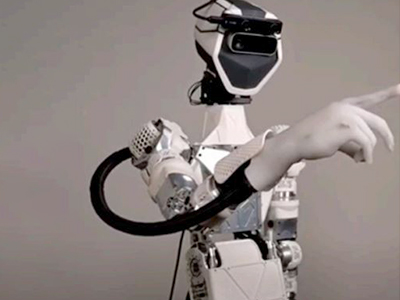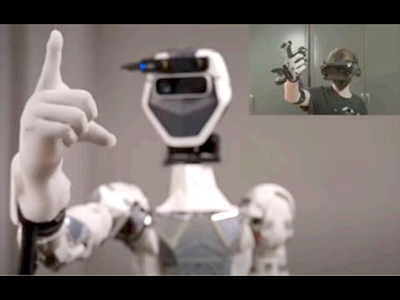
Study participants reported a preference for remote medical appointments over in-person after an augmented reality-controlled robot exam.
Robot-assisted care may be just around the corner. Research led by Vancouver Coastal Health Research Institute researcher Dr. Kendall Ho demonstrated the feasibility of using a general purpose robot with human-like capabilities to conduct a heart-related medical examination.

Equipped with a touch feedback system, the robot was designed and programmed to simulate human touch to enhance the interpersonal relationship between it and study participants.
“For persons who live in remote locations, far away from hospitals or specialists, tele-robots can act as a conduit for personalized and tactile care between a physician and patient.”
Ho’s study — published in the Journal of Rehabilitation and Assistive Technologies Engineering (JRATE) — involved a robot with a moving arm and hand, the latter of which was designed to simulate human touch.

Photo credit to JRATE
The robot was operated by a research team member called a ‘pilot.' The pilot donned a haptic glove, which controlled the robot’s hand, and an augmented reality (AR) headset that live-streamed video from the robot’s head-mounted camera.
While AR headsets have been around since the late 1960s, their use in health care delivery is still in its early stages. The first AR-supported surgery took place as recent as June 2020 at Johns Hopkins University in Baltimore.
The AR headset used in Ho’s study was worn over the pilot’s eyes, projecting a virtual version of the test environment from the robot’s point of view. In some cases, AR can superimpose computer-generated information on top of an environment to provide additional layers of information or engagement.

Photo credit to JRATE
Eleven volunteers aged 19-49 years with no known existing health conditions individually attended a one-hour test session in a study room with the robot and a clinician. In another room, the pilot moved a haptic glove to direct the movements of the robot’s arm in performing an electrocardiogram (ECG) examination.
The robot’s hand was guided by the pilot to place a digital ECG stethoscope remote against each participant’s chest to pick up electrical signals in the heart — an important vital sign and health indicator. These ECG readings were stored in a cloud-based database for later analysis by the study team.

Photo credit to JRATE
The research team monitored the safety of the robot in performing these tasks for the duration of the exam, including the degree of pressure exerted by the mechanical hand on a participant’s body, as well as the accuracy of the robot’s ECG scan readings and ability to form a connection with each study participant.
“We found that the robot’s ECG readings were relatively consistent across all participants,” says Ho.
However, in one instance, a movement by the robot interrupted the ECG reading. The study team also noted that variations in participants’ chest and torso area, such as low body fat, a bony body structure, body hair and breast implants interfered with the accuracy of the ECG readings.
Building rapport between patients and robots
Trust and comfort are often essential in establishing positive relationships between clinicians and their patients. In prior research, care aids, such as robotic pets, have had beneficial effects on the health and well-being of seniors.
Ho and his team found that all participants felt comfortable with their tele-robot examiner and safe during the exam. Seventy-two per cent of participants also noted a preference for remote medical exams in the future.
“This type of technology could make it easier for patients to receive fast and convenient medical examinations remotely,” says Ho. “For persons with infections such as tuberculosis or COVID-19, or those with mental health exacerbations who may withdraw from human interactions, a robot could provide an added layer of safety and comfort to the patient and care provider.”
As global populations increase and age, robotic technological advancements could help fill gaps in health care personnel, extending quality care to patients around the province and in rural communities without compromising safety or clinician rapport.
“Our findings demonstrate that the robot was capable of remote examinations, and accepted by participants and clinicians.”


